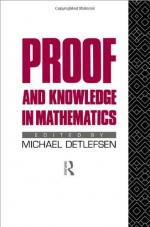|
This section contains 1,398 words (approx. 5 pages at 300 words per page) |

|
1900-1949
Abstraction and generalization have often been useful elements of the mathematician's toolkit. They gained in prominence in the nineteenth century and became perhaps the most distinguishing features of mathematics during the period under consideration. For example, Galois's theory of polynomial equations with real-number coefficients was developed by Ernst Steinitz in 1910 over arbitrary fields. The definition of distance between points in Euclidean space was extended by Maurice Fréchet in 1906 to arbitrary sets, giving rise to the important concept of a metric space. This also enabled mathematicians to extend the notion of continuity of a function to such a space. About a decade later Felix Hausdorff generalized these ideas further by noting that distance is not needed to define continuity: "neighborhoods" would do. This was done in the context of his definition of a topological space. The basic notion of function also underwent a grand generalization...
|
This section contains 1,398 words (approx. 5 pages at 300 words per page) |

|


